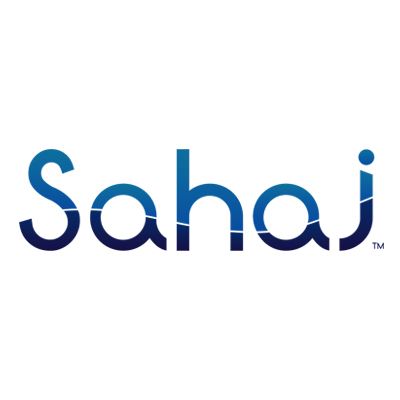
Sahaj
View Brand PublisherLeveraging technology to bring applied data science to life
At the end of 2017, the digital universe held 2.7 Zeta Bytes (1 ZB = 931.3 Billon GB) of data, as per Martech. IDC estimates that by 2020, the number of business transactions on the internet – both business-to-business and business-to-consumer – will reach 450 billion per day. For example, certain companies like Akamai will soon be analysing 75 million events per day to better target advertisements. Data analysis, and leveraging relevant data, is crucial. There are many companies/academic institutions providing data enthusiasts/data scientists with learning platforms to understand and master the techniques of data analytics. Most of them follow the traditional approach of providing necessary theory and instruction-based material, with tips to practice offline, using popular open source languages like R, Python, etc. The learning space, in general, lacks innovation. Upgrading applied skills in specialised fields like analytics was all the more difficult…until now!

Analyttica Datalab Inc. has taken the lead in bringing a fundamentally different approach of “experiential learning” to ContextualData Analytics. It focuses on seamless ‘learn-by-doing’ and ‘do-by-learning’, on-the-job experience, through its proprietary, interactive, simulation-based experiential analytics and data mining platform called Analyttica TreasureHunt® (ATH), which is fast becoming a game changer in the existing ecosystem of experiential and applied analytics.
Founded by Rajeev Baphna in 2012, Analyttica primarily operates in the financial analytics space. Rajeev spent more than two decades at a multi-national bank, where he created world-class Centres of Excellence in Analytics, working across 25 global markets. Analysts lie at the confluence of three streams – data science skills, industry/domain understanding, and technology advancements – each of these are essential factors for an analyst to drive tangible and incremental business impact, using data-driven solutions, with an ability to create a simple bridge for the business manager from “data to impact”, thus keeping “business contextuality” in mind for all analyses. “When we started Analyttica, we had two objectives in mind – one was to leverage our experience to create value for clients, and the second was to solve recurring problems that clients face in using data, and to simplify the learning of the techniques involved in doing so”, says Satyamoy Chatterjee, SVP and Head, Client Solutions at Analyttica.

Choosing to stay industry agnostic, Analyttica decided that they wanted to get into experiential training first, and design the technology to solve B2B problems by leveraging AI. Citing the example of flight simulation training, Rajeev says, "While they are on the job, pilots have to face factors like air density, turbulence, cloud precipitation, and other such unplanned events; simulation training helps them understand real life situations and strengthen their reflexes. We developed ATH with the same idea in mind to enable analysts to apply themselves to create real business impact. The existing approach to learning in this field,which is primarily focused on instruction based learning a new coding language and/or mastering tools and techniques, rarely allows for applied qualities to foster, and nourish, leading to micro-retention of knowledge over time, and severe distortion of business elasticities viewed from an analyst’s versus a manager’s perspective.”
“However, none of us had a pure technology background. Our experience was with business solutions. That’s when we decided to approach Sahaj Software to create a technology solution to take our platform to market. They were a true technology partner in bringing the thought and the idea to life”, Satyamoy adds. Says Rajeev - “We approached Sahaj with a simple question: Could we actually build an applied analytics platform that competes only with “Experience?”
He adds, “Analyttica knew that there was a true ‘science’ to it, with significant ‘art’ overlay through experience. Technology could be built to address the science aspect, and business contextuality through real data could be enabled to build the art aspect. So, Analyttica decided to build a platform where people could use real data to solve real problems, guided virtually and intelligently by technology enabled platform with good user experience, thus creating a framework that seamlessly mixed learning and doing. Examples of business contextuality would be customer retention analysis, media mixed modelling, etc that could all be simulated for the user to work on a live statistical platform that would be a virtual enabler. We wanted to help them create a platform for building these simulated scenarios in the form of courses and modules, and later with loading own projects and data, that would allow people to come, learn, and explore with their own challenges.”
The same platform has also been designed for businesses to solve real-world business problems by building analytical models and solutions based on past data/projects. “In the future, the platform can be used to build B2B solutions, wherein customers can model solutions to their business problems which gets refined over time with real-time feedback coming in, empowering them with improved accuracy in activities like budget optimisation, targeting potential customers, etc. The platform simplifies an otherwise complex and cumbersome process and can create a disruption in the way analyses is done, by allowing a true man-machine blend and dynamic live collaboration with experts”, says Sharath.
When Analyttica approached Sahaj, they had been working on a prototype platform for nearly two years with a team of 10+ people. The feedback from the market was extremely positive on the concept, however there were issues related to scale, performance, and reliability in a B2C scenario. “We told them that we knew nothing about analysis, or their packages. But the team at Sahaj put their efforts into understanding the problem and delivering a solution for the client that could be used across both B2B and B2C segments”, says Sharath.

Satyamoy says that the team at Sahaj understood the problem they were facing and that the two teams’ way of functioning was perfectly aligned. “We wanted a design that was tool/ package/ language agnostic, that would help the analyst focus more on the analytics than the tools, and be able to scale. Scaling is not an easy problem to solve. That was our biggest challenge. But Sahaj solved the problem well. I think their biggest advantage is that they get excited by challenges and they really come through beyond what they have said on paper to tackle a problem.”
Rajeev adds that ATH learns how one learns, makes one’s learning curve steeper, and makes concept retention and recall simple, all the while ensuring that one operates in a simulated business environment with real data. ATH focuses on three key elements – Learn by Doing, Apply via Experience, and Solve Real Problems immediately. ATH has the potential to transform the landscapeof data science learning and application in a business context. The analyst then becomes a strategic asset to the business, because he/she is “sculpted” to driving strategic business impact.
There are a very few people that can take such a concept in such a specialized field, and bring it to life in such a short time frame, through an advanced technology platform. “I have been extremely impressed with the way Sahaj addressed this challenge and dove head on to build such a high performance modular platform that has literally given life to body”, says he.
The team built a modular, scalable engine that could adapt to different uses. The engine had to be solid and versatile enough to take different kinds of data and run statistical analysis.
Sharath adds - “The first challenge with an ask like this is the size of the data. As the size of the data increases, your way of managing the data, and the performance has to scale. The real beauty of this platform is that the data never actually moves across the platform; only the metadata does. The data is acted on where it is without having to move it because of scale; finally, while showing the output, the final path is shown to the user. The biggest mistake in data science is that people who manage the data move it. We have kept data movement to the lowest.” Currently the platform is hosted on MS Azure (ath.analyttica.com), but can also be deployed on premise. The first phase of the B2C component went live on December 1, 2017, and the B2B component will go live in February 2018, without the team having to rewrite much more in the B2C component.








